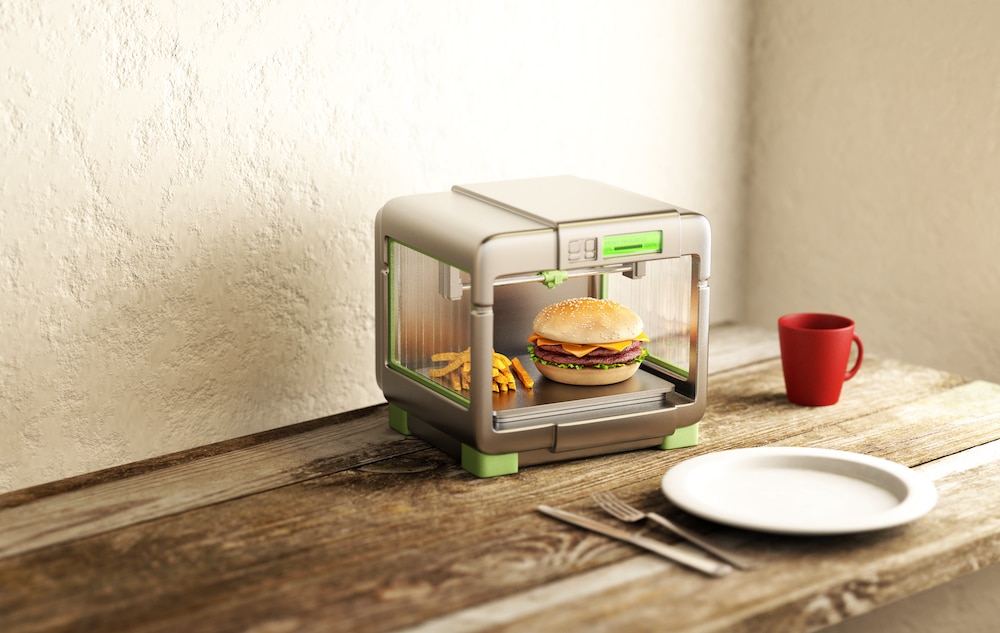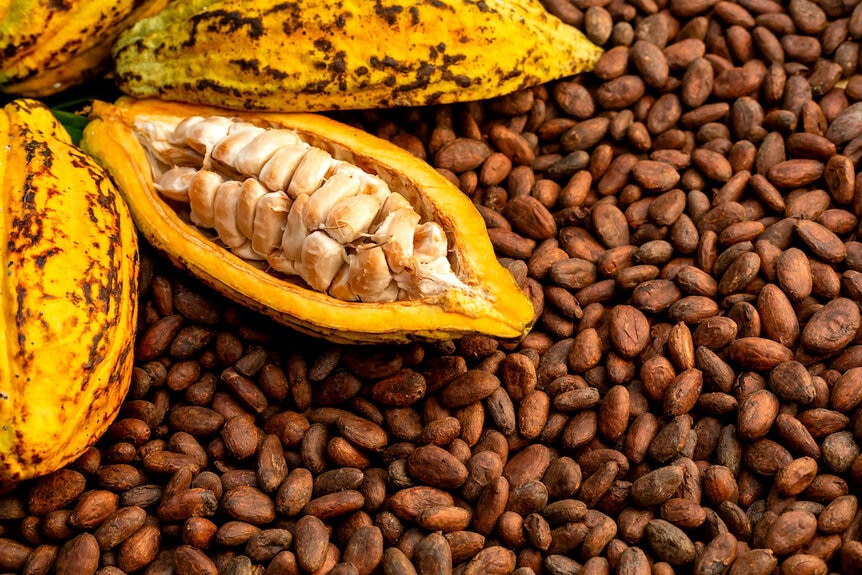Create a free profile to get unlimited access to exclusive videos, sweepstakes, and more!
3D printed chocolate 'meat' lets you have your dessert with dinner
Futuristic 3D-printed foods offer a taste of the sweet and savory all at once.

Plant-based diets are on the rise with sales of meat alternatives growing rapidly. If the trend continues, the future will include more and more plant foods and less actual meat. To really take this shift in diets into the future in an emotionally satisfying way, we also need to introduce an element of sci-fi tech. Which is precisely what scientists are doing.
A recent paper by Songbai Liu and Shanshan Wang, both from the Department of Food Science and Nutrition at Zhejiang University, describes a method of building meat alternatives a layer at a time using 3D printers. Their findings were published in ACS Food Science & Technology.
Of course, 3D printing foods isn’t an entirely new technology. Previous researchers have developed a method for printing what amount to chicken nuggets, which come out already cooked by onboard lasers. But printing plant-based meat alternatives comes with its own set of challenges.
As the population increases, and the demand for food with it, we may be faced with establishing new or streamlined methods of distributing resources. Meat alternatives offer some relief in this regard as they reduce the resource load associated with animal agriculture. There are additional benefits related to greenhouse gas emissions and exposure to antibiotics, diseases, and parasites. 3D printed foods, no matter their composition, also allow for some relief to the supply chain, according to the authors. That’s something of particular interest right now.
Meat alternatives typically rely on a number of plant materials to mimic the texture and nutritional value of traditional meat. Most common among these materials are soy and wheat gluten, so researchers set out to develop a dough made of these materials which could be extruded through a printer, built up on a plate, and able to hold its shape. The team tried a number of different ingredients added to the soy and wheat gluten to get the dough they wanted, and eventually settled on an unlikely partnership. Surprisingly, the best ingredient turned out to be fat derived from cocoa beans, more commonly known as cocoa butter.
In initial tests, researchers formed a dough without the addition of cocoa butter, but found that it could not be extruded consistently. Cocoa butter works well for this application because it has a melting point slightly above ambient temperatures. As a result, the printer melts the fat, allowing the dough to become liquid enough to lay down on the build plate, while still being able to set up nicely at room temperature.
"Cocoa butter alters the taste a little bit, but it doesn't matter. The taste will be adjusted accordingly," Liu said.
Several different formulas were attempted in order to find the correct combination and ratio of ingredients. The final recipe consisted of equal parts soy protein and wheat gluten with a protein level of 20%, in line with the protein available from animal sources. Starch from wheat, corn, or potatoes was added as a binding agent and shiitake mushroom powder was added for taste. Finally, cocoa butter, sodium alginate, and Tween-80 were added to improve printing fluidity, formability, and texture.
In addition to the printing experience, each of the potential dough mixtures were examined for texture and fat distribution by using electron and fluorescence microscopes after being printed. Using these methods, the team was able to verify that gluten structures existed throughout the printed food. In addition, protein wound its way through the structure.
In a bit of scientific whimsy, the researchers printed each sample in the shape of a heart. The end result looks something like pancake batter before being cooked. Despite the fun shape, doughy appearance, and cocoa-derived ingredients, the resulting food is nutritionally closer to a hamburger than a Saturday morning breakfast.
With 3D printers becoming more and more common, and with pod-based consumables gaining in popularity, the days of at-home printed food might not be far off. With any luck, you might be printing your own heart-shaped plant burgers before you know it.



























